Getting a horse to transition smoothly from a walk to a trot might seem a little tricky at first, but don’t worry, it’s a skill that every rider learns.
We’ll help you understand it through some straightforward, step-by-step instructions.
In horse riding, communication is everything. You and your horse need to understand each other perfectly. That’s why we’re going to break down the walk-to-trot transition into six easy-to-understand steps.
These steps aren’t just about learning a new trick, they’re about forming a deeper bond with your horse. By the end, you’ll know how to ask your horse to trot, and they’ll know exactly what you’re asking for. It’s all about teamwork.
Ready to get started? Let’s take the reins and gallop into our tutorial.
Blog Post: How To Ride A Horse For Beginners: Ultimate Guide
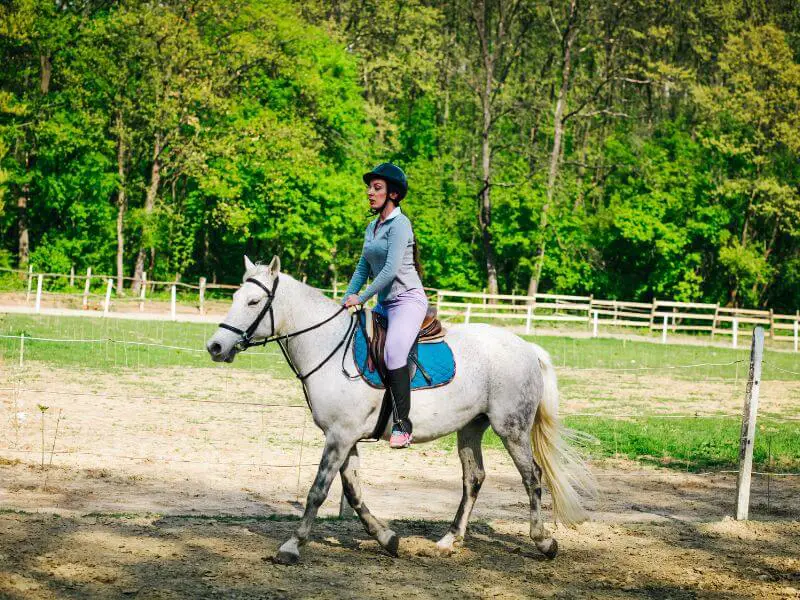
Understanding the Basics
Before we delve into the actual steps, it’s important to understand what we mean by a ‘walk-trot transition’.
This term refers to the change of pace from a walking gait to a trotting gait while riding a horse.
It involves moving from a slower, four-beat walk to a faster, two-beat trot.
This transition is essential in all forms of riding, and especially in disciplines such as dressage.
Check out this post for 5 easy but useful dressage exercises.
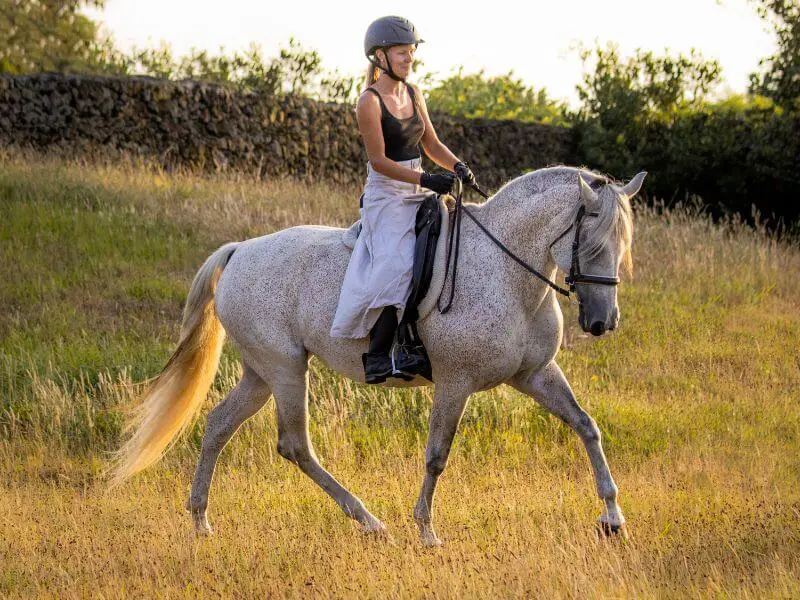
The Steps to Asking a Horse to Trot
Step 1: Establish a Relaxed and Balanced Walk
- Start by getting your horse to walk in a relaxed and rhythmic manner.
- Maintain a balanced seat on the horse to communicate your intentions clearly.
- Ensure that there is a good connection between your aids (your signals or commands) and the horse’s responses.
Step 2: Apply Leg Aids
- Apply gentle pressure on both sides of the horse’s barrel using your legs.
- The pressure should feel like a light squeeze or a pulsing rhythm.
- This tells your horse that you’re about to ask them to do something different.
Step 3: Maintain Consistent Rein Contact
- Keep a soft and steady connection with the horse’s mouth through the reins.
- This contact helps the horse maintain its balance and stay in tune with your instructions.
Step 4: Use Seat and Body Position
- As you apply leg aids, engage your seat by sitting deeper in the saddle.
- This helps you move in sync with your horse and effectively communicates your intentions.
Step 5: Encourage Forward Energy
- As you apply leg aids and engage your seat, use your voice to encourage the horse forward.
- This, combined with your other cues, will prompt the horse to move into a trot.
Step 6: Follow the Horse’s Movement
- Once the horse starts trotting, try to match your body’s movement with theirs, then you can continue sitting trot or start posting trot.
- Keep your position in the saddle relaxed and balanced.
- This harmony of movement makes the ride smoother and more comfortable for both you and the horse.
To ensure you’re on the correct posting diagonal at the trot, check out our article on How To Tell You’re On The Correct Posting Diagonal.
If you’re struggling with sitting the trot without bouncing, our Super Helpful Guide provides valuable tips and techniques.
Remember to practice these steps slowly and with patience.
Make sure that your horse understands and responds to your aids.
Regular practice, clear communication, and positive reinforcement will help your horse learn to trot from the walk with ease.
Troubleshooting the Walk-Trot Transition
Even with these guidelines, there might be times when the transition doesn’t go as smoothly as you’d like. Here are some troubleshooting tips for two common problems:
Problem: The Horse Rushes Through The Transition
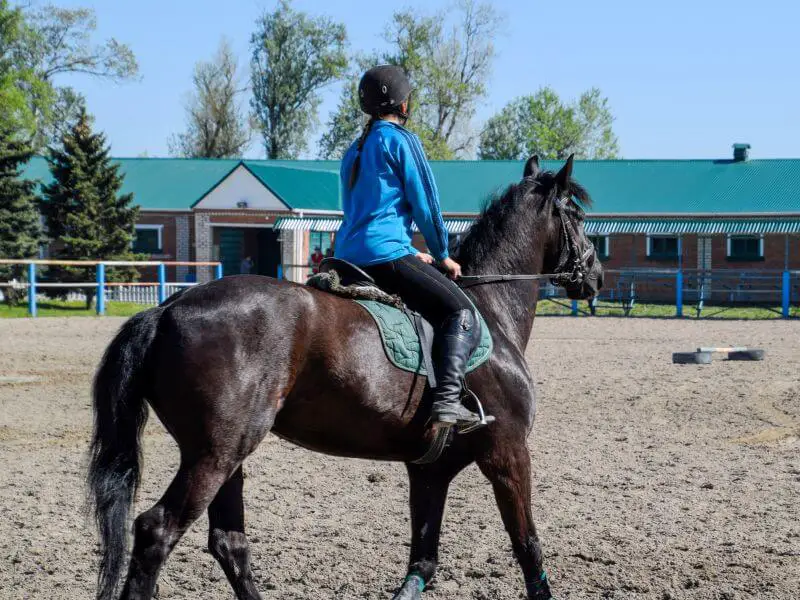
Solution:
- Ensure a balanced and controlled walk before initiating the transition.
- Use a half-halt (a temporary, slight hold on the reins) to prepare the horse for the transition.
- Apply your aids progressively, gradually increasing their intensity if needed.
- Incorporate walk-halt-trot transitions into your training to help the horse understand the concept of changing gaits.
Problem: The Horse Doesn’t Want to Trot
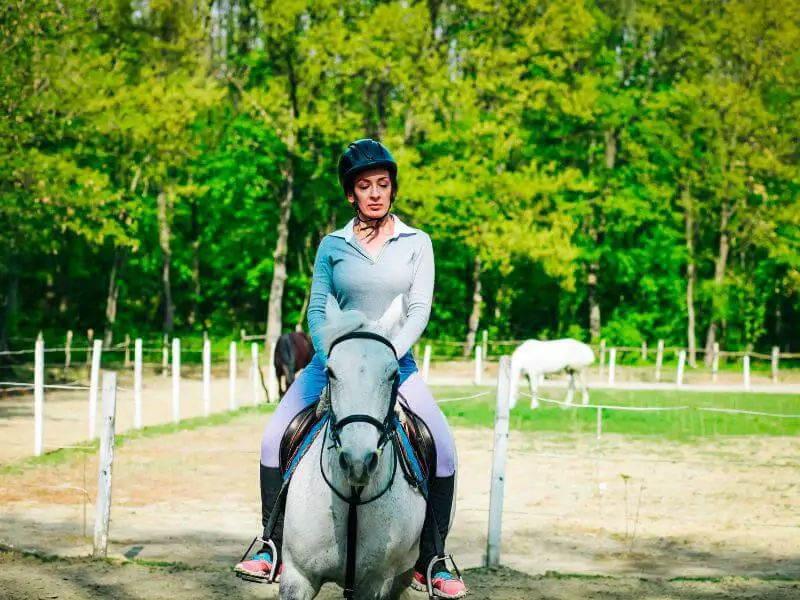
Solution:
- Use your leg aids to encourage the horse forward.
- Pair your leg aid with a vocal cue to prompt the horse to trot.
- If the horse is unresponsive, consider using a dressage whip or spurs to reinforce your aids. Make sure to use these tools responsibly and start with gentle cues.
- Check that the horse is relaxed both mentally and physically. Tension can make a horse unwilling to transition to a trot.
For more in-depth guidance on horseback riding, we suggest checking out reputable books like ‘Complete Horse Riding Manual’ by Willian Micklem.
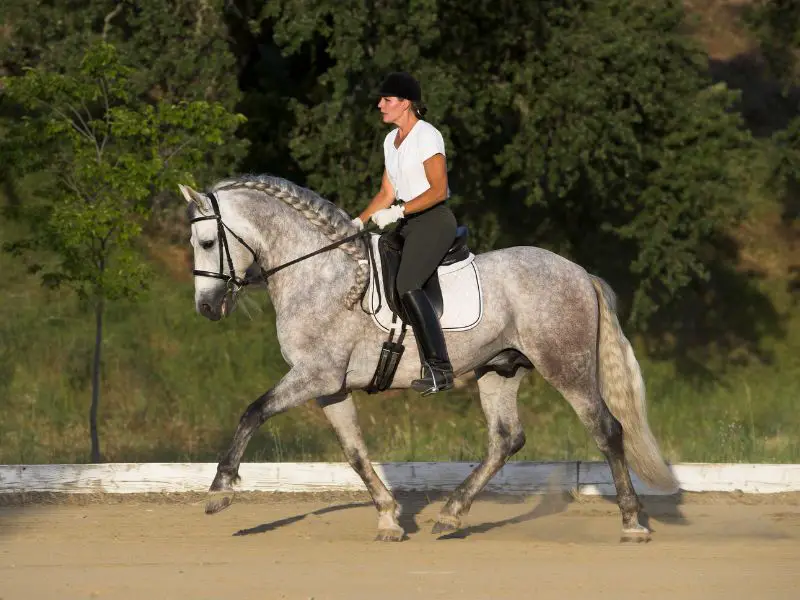
Wrapping Up
Remember, patience and consistency are key in mastering the walk-trot transition.
If you consistently run into trouble, don’t hesitate to seek advice from a more experienced rider or trainer.
They can offer personalized guidance based on their observations of you and your horse.
Enjoy your riding journey!
Cheers, Kacey
P.S. Did you like this article? Gallop over to:

